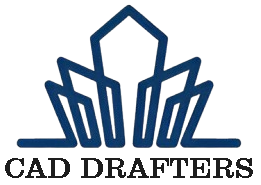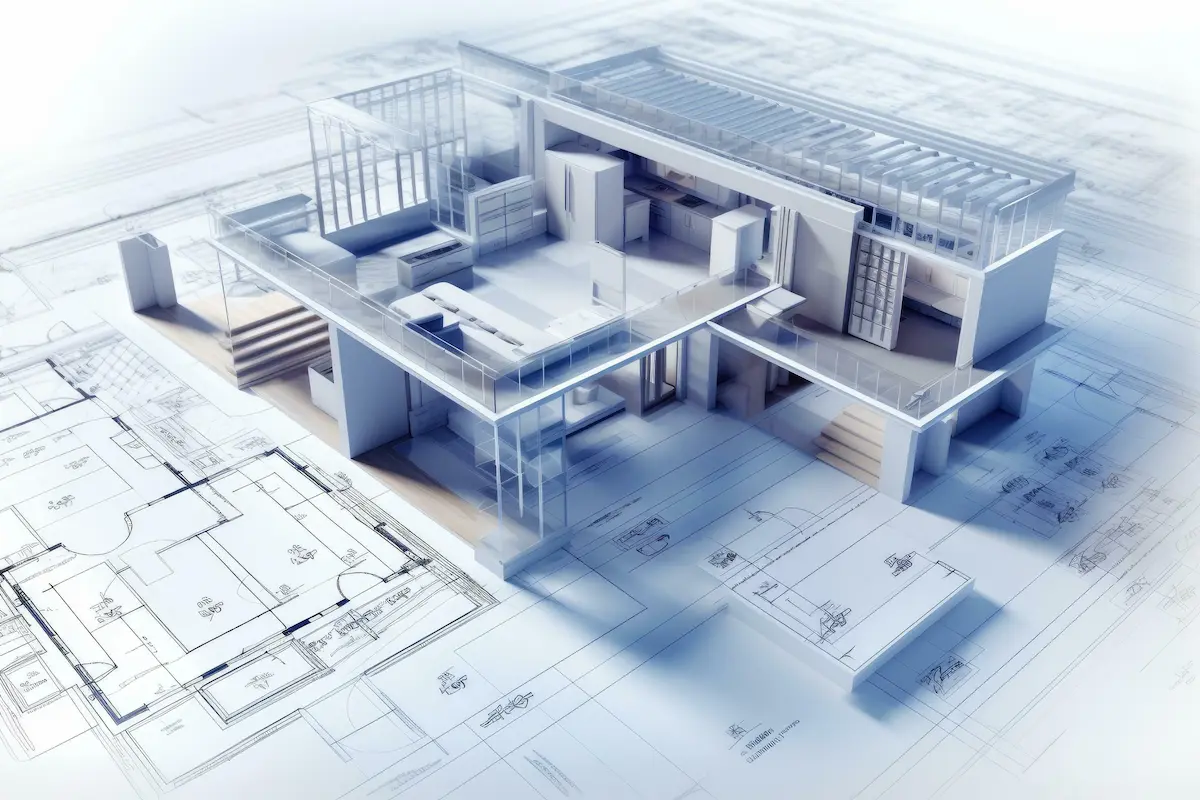Here’s a story: You, a contractor, and a 2,000 sq ft renovation
You’re bidding for a full renovation on a 2,000 sq ft house. The homeowner wants an open-plan kitchen, a reconfigured master bath, new HVAC, updated electrical, and a backyard patio.
Let’s consider, you give an estimate of $150,000, and the owner signs. Three weeks in, a structural issue pops, a merchant quotes a 12-week lead time on the hood they ordered, and the drywall labor needs two weeks more because of a supply shortage. The timeline and the budget get out of control.
The whole scenario seems like a nightmare, but it’s the reality for many construction projects. Complete-house remodels in 2025 commonly run between roughly $100–$200 per sq ft, which puts a 2,000 sq ft full renovation in the $200,000–$400,000 range, depending on scope.
What’s the solution? Choosing the right home renovation software can cut overruns and shave weeks off the timeline. Studies and market reports show project-management and procurement tools can reduce delays and lower cost overruns, often in the 10–20% range on project time and administrative costs. Simply put, software won’t fix bad scope, but it hugely reduces the predictable issues.
Key Takeaways
- A full 2,000 sq ft renovation in 2025 usually costs $200k–$400k, depending on scope. Accurate software and well-managed procurement can reduce schedule risk and admin costs by roughly 10–20%, saving significant money on big jobs.
- Choose software based on your weakest link: estimating accuracy, procurement, client visuals, or BIM coordination.
- If your team lacks CAD or BIM expertise, outsource drafting will pay for itself by cutting RFIs and rework.
Why Software Matters
Think about the most time-consuming parts of a remodel: takeoffs, change orders, RFIs, vendor follow-ups, delivery windows, and punchlist tracking. A modern renovation platform bundles many of those tasks, including digital takeoffs, line-item estimates, procurement dashboards, PO generation, schedule integration, and photo-based field reports.
Project data shows average cost overruns of ~27% across projects in general; poor estimating and rework are major contributors. Implementing estimation, scheduling, and procurement workflows in software cuts errors and missed orders. Conservative industry figures suggest you can reduce project schedule risk and admin overhead by roughly 10–20% with mature software and disciplined use.
So we’ll do two things in this post:
- Lay out the criteria you should use to evaluate renovation software.
- Walk through the top 10 home renovation software for 2025–2026.

Criteria for House Renovation Software Evaluation
Before we list tools, know what actually matters. The greatest tool is the one that solves your weakest link, including estimating accuracy, supplier reliability, scheduling, and client visuals.
Benefits of Using the Right Software
Reliable software turns guesswork into data. It speeds estimates, centralizes communication, reduces RFIs, tracks change orders automatically, and makes procurement predictable. That means fewer emergency calls at 7 pm, smaller contingencies, and satisfied homeowners who actually get their keys on time.
Here are the features that show a tool’s credibility and worth.
● Accurate Estimating & Takeoffs
Look for built-in takeoff tools or tight integrations with your estimating platform. Accuracy here stops the first bleed: if you under-quantify tile or cabinets, you’ll eat cost later. A tool that links quantities to cost catalogs and updates with vendor pricing is worth its weight.
● Scheduling & Gantt Integration
The software should link procurement to the schedule, such as POs tied to delivery windows and installers mapped to finish milestones. Ultimately, if a vendor’s ETA slips, your schedule will update automatically and send alerts so the team won’t be waiting.
● Procurement, PO & Vendor Management
PO generation, vendor acknowledgments, and payment milestones should be native or well-integrated. The ability to store vendor lead times, shipping constraints, and warranty docs saves last-mile headaches.
● Drawings & 3D Visualization
Clients love seeing a realistic 3D rendering. But you also need floor plans that export to CAD/BIM formats for trades. Look for software that offers usable 2D plans and believable 3D views, not just pretty renderings.
● Mobile Field Tools & Photo Reporting
On-site photos, markups, and real-time checklists prevent miscommunication. Tools that let installers upload images with time/location stamps close punch lists faster and create evidence for warranty claims.
● Integrations & Open Export
Your stack should play well with QuickBooks, Procore, Revit, or whatever you use. Look for CSV, IFC, DWG exports and API integrations so data flows between estimating, accounting, and field teams. Closed platforms cost you later.
● User Adoption & Training
A sophisticated tool’s value collapses if nobody uses it. Prioritize an intuitive UI, good onboarding, and vendor support. You want something your PMs and field leads will actually open.
Top 10 Home Renovation Tools & Software Systems
Below are 10 platforms that dominate searches and contractor recommendations in 2025–2026.
1. SketchUp
SketchUp is the flexible 3D modeler many remodelers use for rapid concepting and shop drawings. It’s great for quick visualizations, furniture layouts, and simple model exports to other CAD/BIM tools. For many contractors, SketchUp is the design-to-client-approval engine.
SketchUp gives you fast 3D mockups and intuitive modeling for layouts and massing, perfect for client sign-off and preliminary trades coordination.
| Feature | Notes |
| 3D modeling | Fast, intuitive, large plugin ecosystem |
| Exports | DWG, 3DS, OBJ, IFC via plugins |
| Ease of use | Moderate — steep when modeling details |
| Price | Freemium + Pro subscription |
2. Home Designer Pro
Aimed at residential designers and remodelers, Home Designer Pro automates framing, roofing, and cost calculations while producing client-ready visuals.
So, it’s a residential-focused tool that produces construction-level drawings and helpful cost features, making the jump from design to permit easier.
| Feature | Notes |
| Construction docs | Strong for residential construction |
| Costing | Integrated material lists and estimates |
| 3D preview | Good for client walkthroughs |
| Price | Paid license, mid-range |
3. Planner 5D
Planner 5D is browser-based and beginner-friendly, focused on quick 2D-to-3D layouts and home interiors. Good for client-facing visual options and early-stage design choices.
It’s a fast, accessible, and usable on tablets, useful for in-home sales meetings to show material/finish options quickly.
| Feature | Notes |
| Accessibility | Web + mobile apps |
| 3D visuals | Decent photorealistic renders |
| Ease of use | Very high — good for clients |
| Price | Freemium with paid assets |
4. Sweet Home 3D
Open-source, lightweight, and focused on interiors. Good for quick layouts and budget projects where simplicity matters.
This home renovation software is free, simple-proof, and reliable, and great for basic plans and initial client approval without heavy licensing costs.
| Feature | Notes |
| Cost | Free/open-source |
| Functionality | Basic but usable 2D/3D |
| Exports | OBJ, SVG |
| Best use | Small remodels, early design |
5. AutoCAD Architecture
AutoCAD Architecture brings a construction-grade CAD environment with object-based architecture tools. It is ideal for contractors who need precise drawings for permits and trades.
The tool is heavy-duty for professionals who need precise construction documentation and interoperability with engineers.
Top 10 Home Renovation Software for 2025–2026 to plan, design, and manage your remodeling projects efficiently.
| Feature | Notes |
| Precision | Industry-standard CAD accuracy |
| Interoperability | Strong DWG/DXF support |
| Learning curve | High, need trained users |
| Price | Premium |
6. Chief Architect Premier
A pro-grade residential design platform with strong documentation features and cabinets/trim builders. It’s a favorite of remodelers who want full construction-ready drawings.
It is built for residential pros who want production-ready drawings and strong cabinet and trim tools.
| Feature | Notes |
| Cabinet & trim tools | Robust, parametric |
| Construction docs | Strong |
| 3D rendering | High-quality |
| Price | High-end |
7. Houzz Pro
Houzz Pro is an all-in-one house renovation software for contractors, helping them with estimates, proposals, invoicing, lead gen, and basic design tools. It’s aimed at small-to-mid renovation businesses.
It combines CRM, proposals, and marketing with project tools, making it useful for contractors who want one platform to run the business and projects.
| Feature | Notes |
| All-in-one | Proposals, invoices, and client management |
| Visual tools | Moodboards, basic plan tools |
| Field app | Photo notes, scheduling |
| Price | Subscription tiers |
8. HomeByMe
HomeByMe is user-friendly and good for client-facing 3D renders and room planning. It is one of the strong visualization tools that helps clients commit to finishes and layouts, reducing change orders.
| Feature | Notes |
| 3D visuals | Photorealistic |
| Client-facing | Simple for non-tech users |
| Export | Limited CAD exports |
| Price | Freemium + paid |
9. Cedreo
Cedreo is the best design tool for home renovation and is built for home builders and remodelers who need quick 3D renderings and floor plans, optimized for sales.
It supports fast concept-to-render workflows, making it an ideal option for sales-focused contractors who need professional-looking proposals quickly.
| Feature | Notes |
| Speed | Quick plan-to-render workflows |
| Sales tools | Proposal-ready visuals |
| Team use | Multi-user features |
| Price | Subscription |
10. ArchiCAD
ArchiCAD is a BIM-capable platform with a strong architectural modeling core. Best for complex renovations where coordination with engineers and structural work matters.
Simply put, it provides BIM-ready and precise outcomes, facilitating structural changes with smooth coordination.
| Feature | Notes |
| BIM | Strong model coordination |
| Exports | IFC, DWG |
| Price | Enterprise-grade |
| Best use | Complex renovations, engineering coordination |
How These Tools Help the 2,000 sq ft Renovation
● Estimating & Takeoffs
AutoCAD Architecture, Chief Architect, Home Designer Pro. These reduce estimating errors that cause direct cost overruns.
● Client Sign-Off & Visuals
Cedreo, HomeByMe, Planner 5D, SketchUp. Use them to reduce late design changes (one major cause of late deliveries).
● Procurement & PM
Houzz Pro and integrated PM platforms connect POs and schedules to delivery windows, reducing last-mile delays by updating teams automatically.
● BIM Coordination
ArchiCAD or AutoCAD for projects needing engineer coordination to prevent rework.
Expertise Required to Operate Home Renovation Software
Software solves problems only if one uses it correctly. Many contractors lack trained staff for advanced tools. Basic tools (Planner 5D, Sweet Home 3D) are easy; clients and sales persons can learn them quickly. However, pro-grade software, like AutoCAD, ArchiCAD, and Chief Architect, requires trained drafters or designers.
Learn more about how BIM enhances drafting accuracy and collaboration in our detailed guide: What Is BIM?
Most contractors don’t want to hire a full-time CAD expert. That’s where skilled CAD drafters come in. They translate the design intent into construction documents, produce permit-ready drawings, generate accurate takeoffs, and export files into the formats your subcontractors need. Outsourcing drafting keeps your team lean while ensuring higher accuracy and fewer RFIs.
Professional CAD Drafting Services to Make Your Project a Success
If you want faster, cleaner remodels, professional CAD Drafters is a multiplier. We provide:
- Accurate construction drawings that prevent misinterpretation on site.
- Faster permit approvals with properly formatted packages.
- Precise takeoffs and material lists that feed your procurement system and reduce cost surprises.
- Interoperability with engineers using IFC/DWG exports to avoid rework.
At CAD Drafters, we specialize in turning concept sketches into permit-ready plans, producing detailed elevations, cabinet layouts, and demolition/installation drawings that fit your chosen renovation platform. We work with your preferred home renovation software and deliver files that plug straight into your procurement and PM tools. Ultimately, this cuts RFIs, minimizes change orders, and keeps your outcomes measurable.
So if you want a drafting partner who understands contractor timelines and renovation realities, reach out! We’ll produce permit-ready CAD, quick turnaround shop drawings, and FF&E-ready documentation so your next 2,000 sq ft job closes successfully.
FAQs
- Which home renovation software is best for beginners?
Planner 5D and Sweet Home 3D are the easiest to learn. They’re great for quick client visuals and early planning. - Can I use these tools on mobile or tablet?
Many tools, like Planner 5D, HomeByMe, and Houzz Pro, offer web/mobile apps. However, heavy CAD/BIM tools generally require desktop setups. - Are there free home renovation software options?
Yes, Sweet Home 3D and limited SketchUp web tiers provide free use; others are freemium with paid features. - How realistic are the 3D visualizations?
Tools like Cedreo and HomeByMe offer photorealistic renders. Realism varies by renderer and asset libraries; always set client expectations if you use lower-tier presets. - Can I export renovation designs to CAD or BIM-ready formats?
Pro tools, like AutoCAD, ArchiCAD, SketchUp Pro with plugins, support DWG/IFC/OBJ exports. Lighter tools may need intermediate conversions.





